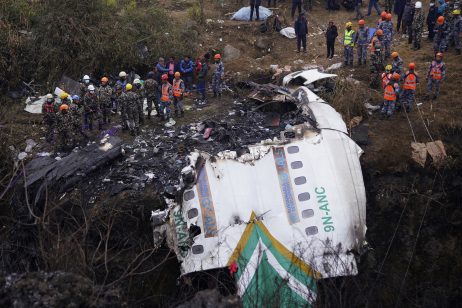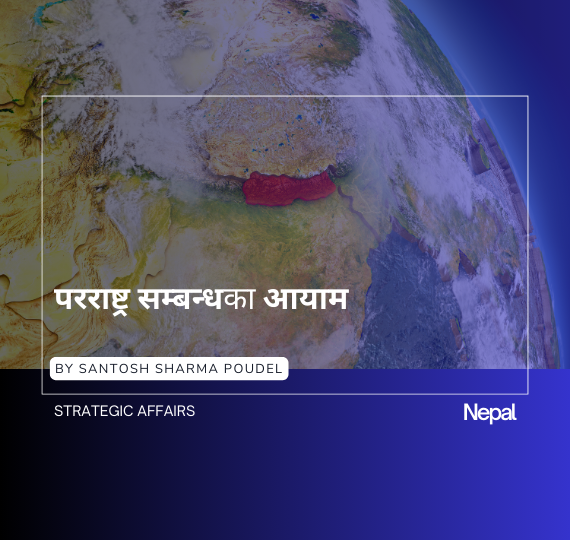The column originally appeared in The Diplomat on 27 January 2023. Please read the original article here.
On January 15, a Yeti Airlines aircraft carrying 72 people, including four crew members, crashed a few kilometers away from Pokhara International Airport (PIA). Fifty-seven of those on board the aircraft were Nepalis and 15 were foreigners. This is the deadliest air crash in Nepal in the last three decades.
The crash came barely a fortnight after Pokhara International Airport began operations.
Apparently, the pilot did not report “anything untoward,” and PIA is among the “easier” airports in Nepal to navigate. An investigation is underway to identify the cause of the crash.
Nepal is no stranger to airplane crashes. It has been barely eight months since the last crash; a Tara Air plane crashed in May 2022 killing all 22 on board. In the last decade alone, there have been 20 crashes.
The mountainous terrain of Nepal means that air travel is the only option to reach some places. Even with alternatives, poor road infrastructure, short air travel, and increased disposable income have led to a rapid increase in the number of air travelers.
Investment in air travel infrastructure has also increased; over the last eight months, two new international airports have started operations.
The Yeti Air crash has raised concerns over air safety in Nepal. The role of aircraft operators and pilots as well as equipment is under the scanner.
First, Nepali aircraft operators cannot afford to buy new aircraft, forcing many to opt for cheaper used aircraft. Operators are said to have complied with only four of five accident investigation recommendations for air safety. Their close links to influential political leaders shield them from scrutiny, even when they flout the safety regulations. Many airports have not followed simple fencing, parking, and emergency vehicle standards.
Second, Nepali pilots are generally well-qualified, but there have been cases of indiscipline. Recently, three Nepal Airlines Corporation (NAC) pilots were barred from flying after they disobeyed instructions from the air traffic control (ATC) specialists in Hong Kong. Two more pilots have been grounded for failure to adhere to ATC’s instructions.
Third, Nepal’s air operating and safety mechanism is a mess. Corruption is rampant across the board. Aviation corruption has even brought down a prime minister. The Civil Aviation Authority of Nepal (CAAN) is the service provider and regulator of the aviation sector in Nepal. This has engendered a conflict of interest, especially regarding safety regulations. Ironically, the Ministry of Culture, Tourism and Civil Aviation has not complied with about half the accident investigation recommendations directed to the ministry.
It is partly because of these risks that the European Union has imposed a blanket ban on Nepali airlines flying in European airspace.
The committee investigating the latest air crash will submit the report, detail the cause of the crash, and issue recommendations to improve air safety. However, it is unlikely to make much of an impact on Nepal’s current air safety regime.
The crash is also unlikely to dent air travel in Nepal. Currently, many Nepalis and foreign tourists are anxious about air safety. Pokhara is a major tourist destination for domestic and foreign tourists. After the crash, local businesses reported a decrease in visitors to Pokhara. However, as weeks pass by, the necessity of air travel will override the anxiety about air safety, and aviation patterns will return to normal. Nevertheless, in the short term, it will impact tourism, which was slowly gaining momentum after a two-year disruption due to the COVID-19 pandemic.
There could be a fall in Indian tourist arrivals by flights to Nepal. More Indian tourists could opt for travel by the overland route to Nepal, at least in the short term.
Prominent Indian newspapers have used the tragedy to box China and BRI. They have highlighted that the newly inaugurated international airport was built with Chinese support. Some have drawn attention to the controversy that China claimed the airport was a Belt and Road Initiative (BRI) project. While the statements are factual, the reporting gives the impression that Indian newspapers see this as an opportunity to get back at China. It is a pity that the Indian press has shown little sensitivity to the tragic incident itself.
The crash also provides ex post facto justification for the EU’s ban on Nepali airlines in the EU airspace. At this point, the EU’s pressure on Nepal to make institutional changes to air safety could provide the impetus to Nepal to address the dire situation.




